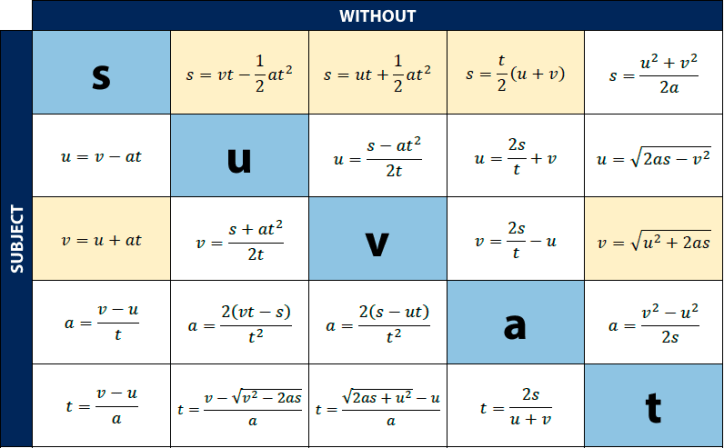Physics Module 1: Kinematics
Table of Contents
Motion
- Motion is a fundamental observable phenomenon.
- The study of Kinematics involves describing, measuring, and analysing motion without considering the forces and masses involved.
Scalars and Vectors
- Scalars are physical quantities that can be described as a magnitude, with a unit (for example, 60km/h)
- Examples of Scalars include time, distance, volume, and speed
- Scalars are represented by a simple italic symbol, such as t for time or d for distance
- Vectors are physical quantities that can be described as a magnitude, a unit and a direction (for example, 20m West)
- Examples of Vectors include position, displacement, velocity, acceleration, and force
- Vectors are represented using VECTOR NOTATION.
- The most common type of vector notation uses an arrow above the symbol, for example
- The most common type of vector notation uses an arrow above the symbol, for example
Adding and Subtracting Vectors Using Algebra (One Dimension)
- When adding or subtracting vectors using algebra, a sign convention must be established to represent the direction
- For example, positive for forwards and negative for backwards
- When using a sign convention it is CRUCIAL to provide a key explaining the convention used.
- Using a sign convention allows you to enter the directions and magnitudes into your calculator. The sign of the final magnitude gives the direction of the total vector.
Steps for Adding:
- Apply the sign convention to change each of the directions to signs
- Add their magnitudes and their signs together
- Refer to the sign convention to determine to direction of thr resultant vector
- State the resultant vector
- Example:
- A student walks 25m forward, then 16m backward, then 44m forward, then 12m backward. Determine the total displacement.
- Forward is positive
- 25m forward = 25m
- 16m backward = -16m
- 44m forward = 44m
- 12m backward = -12m
- Positive is forward
- Therefore, the total displacement is 41m forward.
Steps for Subtracting
- Apply the sign convention to change each of the directions to signs
- Reverse the direction of the initial vector by reversing the sign
- Do vector addition with the results
- Example:
- An aeroplane changes course from 255m/s West to 160m/s East. Determine the change in velocity.
- West is negative
- 225m/s West = -255m/s
- 160m/s East = 160m/s
- Reverse the initial vector:
- Add the vectors:
- Positive is east, therefore the change in velocity is 415m/s East
Displacement, Speed and Velocity
- This section will explain the terms and concepts of RECTILINEAR (straight-line), such as position, distance, displacement, speed and velocity.
Center of Mass
- An object’s motion is described in terms of their CENTER OF MASS, a single point which is the balance point of the object.
Position
- Position describes the location of an object at a certain point in time with respect to the origin.
- Position is a vector quantity and therefore requires a direction. The absolute reference frame for the direction is the origin of the object.
- Position is measured in metres.
Distance Travelled
- Distance Travelled describes how far a body travels during a journey.
- Distance is a scalar quantity and is measured in meters.
Displacement
- Displacement is the change in position of an object, and is represented by the symbol
- Displacement considers only the starting point and ending point
- In other words, the displacement of an object is the straight-line distance between its start and end points
- Displacement is calculated by subtracting the initial position from the final position
- Displacement is a VECTOR and therefore must have a direction as well as a magnitude
Displacement-Time Graphs
- Displacement-time graphs can be used to summarise the motion of an object
- The gradient of the graph at any point is the velocity at that point

Speed and Velocity
- Speed is the rate at which distance is travelled
- Speed is SCALAR
- Velocity is the rate at which displacement changes
- Velocity is a VECTOR
- Speed and velocity are both measured in
Instantaneous Speed and Velocity
- How fast an object is moving at a particular point in time
- The instantaneous speed is ALWAYS equal to the magnitude of the instantaneous velocity
Average Speed and Velocity
- Indication of how fast an object is moving over a period of time
- Average Speed:
- Average Velocity:
Converting between km/h and m/s
- To convert km/h to m/s, divide by 3.6
- To convert from m/s to km/h, multiply by 3.6
SUVAT Equations

- These can also be expressed with different subjects:
